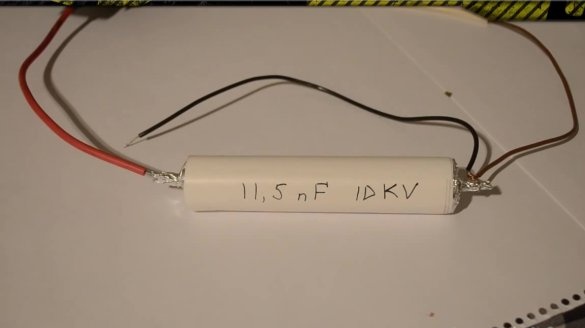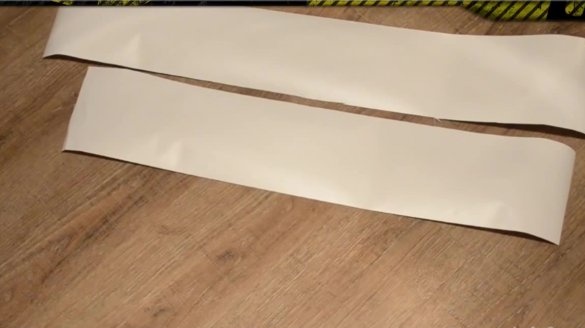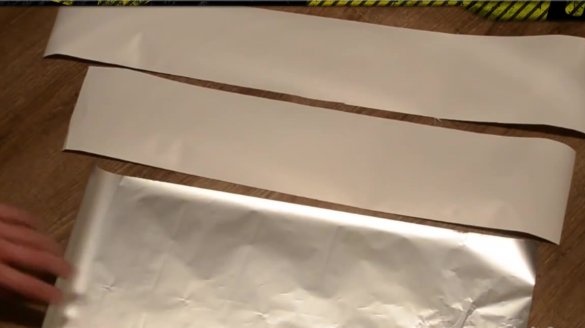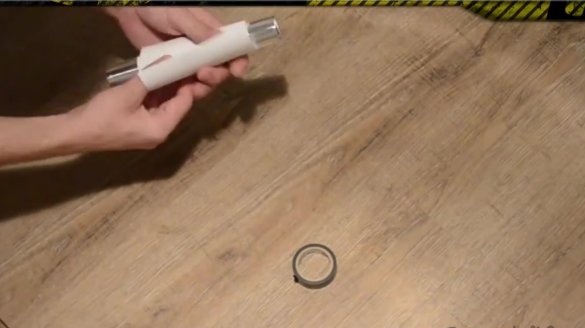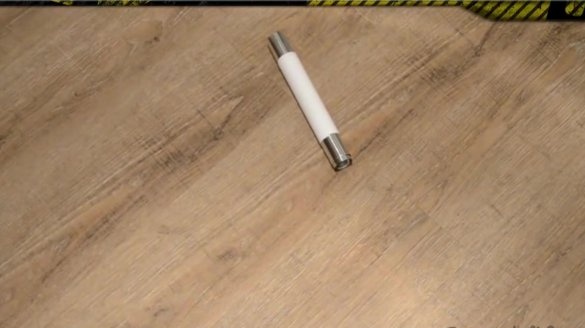Fans of various high-voltage experiments often encounter a problem when it is necessary to use high-voltage capacitors. As a rule, such capacitors are very difficult to find, and if they succeed, you will have to pay a lot of money for them, which not everyone can afford. In addition, the policy of our site simply will not allow you to spend money on the purchase of what you can make yourself without leaving your home.
As you might have guessed, we decided to devote this material to the assembly of a high-voltage capacitor, which is also the subject of the author’s video, which we suggest you watch before starting work.
What do we need:
- knife;
- what we will use as a dielectric;
- food foil;
- a device for measuring capacitance.
Immediately, we note that the author of a makeshift capacitor uses the most ordinary self-adhesive wallpapers as a dielectric. As for the device for measuring capacitance, its use is not necessary, since this device is intended only so that in the end you can find out what happened in the end. Everything is clear with the materials, you can proceed with the assembly of a makeshift capacitor.
The first thing we cut off is two pieces of self-adhesive wallpaper. It takes about half a meter, but it is desirable that one strip is a little longer than the other.
Next, we take the food foil and cut a piece along the length of a short piece from self-adhesive wallpaper. According to the author, it would be better if a piece of foil is about 5 cm smaller than a piece of wallpaper.
The resulting foil sheet mode is exactly two parts in length.
The next thing is to put on a flat surface one piece of wallpaper, on which carefully we put one piece of food foil. The foil must be placed so that at three edges a clearance of about a centimeter is obtained. On the fourth side, the foil will protrude, which is quite normal at this stage.
Put the second sheet of wallpaper on top.
On it we put the second sheet of foil. Only this time we make the foil protrude from the side opposite to the previous step.That is, if the author had the first piece protruding from below, then this time he should protrude from above. It should be noted separately that the foil sheets should not touch each other.
Next, take the resulting workpiece and turn it into a tube.
Now remove the backing from one edge and glue our capacitor.
After that, we bend the edges and fold the foil like a candy wrapper. Thus we get the outputs to which the wires will be attached.

